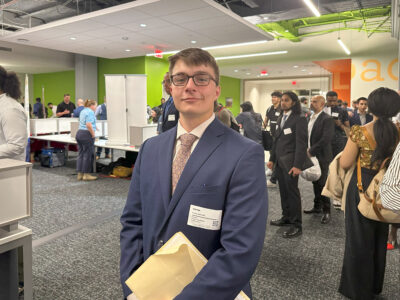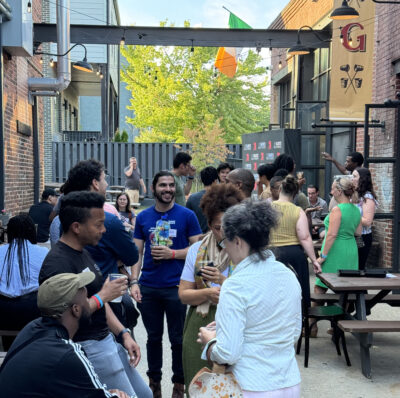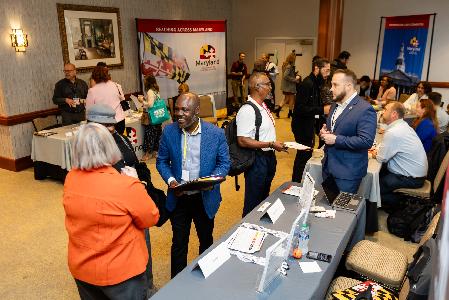Kavita Krishnaswamy traveled all over the world in 2015, attending events like CES in Las Vegas and the Mobile World Congress in Spain. Thing is, she was able to visit those industry gatherings without leaving her Columbia, Md., home.
This has been possible with the help of Beam, a telepresence device that allows her to experience events around the world. (Her travels to the Seattle Art Museum were even covered by CNN.)
According to Krishnaswamy, who lives with spinal muscular atrophy (SMA), Beam is just one way we can use technology to help people with disabilities achieve greater independence.
At this month’s Refresh Baltimore event, Krishnaswamy told her story, making the case for how robots will help people with disabilities.
"We have to foster diversity & focus on the person first." —@KavitaKrish21 #a11y #refreshbmore pic.twitter.com/IcvJRmzmtl
— Refresh Baltimore (@RefreshBmore) May 20, 2015
Over 36.1 million people in America live with disabilities, Krishnaswamy said. While many of those are in long-term care, she believes they can live by themselves and thrive professionally.
How can people with severe physical disabilities live by themselves? Krishnaswamy presented three demo types that will assist in improving the quality of life for people living with severe disabilities.
Krishnaswamy wanted to impart on the audience that everyone can be an advocate for individuals with physical disabilities.
Here are four ways to do so:
- Foster diversity. Help spread the message and advance inclusion.
- Emphasize abilities. Use empowering language: “people with disabilities” instead of “disabled people.”
- Increase accessibility. It will help improve the quality of life for all.
- Embrace technology. With technology like Beam and other remote devices, you can help promote independence.
Krishnaswamy is currently a Ph.D. candidate in Computer Science at the University of Maryland, Baltimore County. Born with SMA, she was unable to leave her home for her studies and has movement in only one finger. Last December, she defended her thesis on robotic aids for people with disabilities, using the Beam robot.
https://youtu.be/KSJus04WFvw
Before you go...
Please consider supporting Technical.ly to keep our independent journalism strong. Unlike most business-focused media outlets, we don’t have a paywall. Instead, we count on your personal and organizational support.
Join our growing Slack community
Join 5,000 tech professionals and entrepreneurs in our community Slack today!




